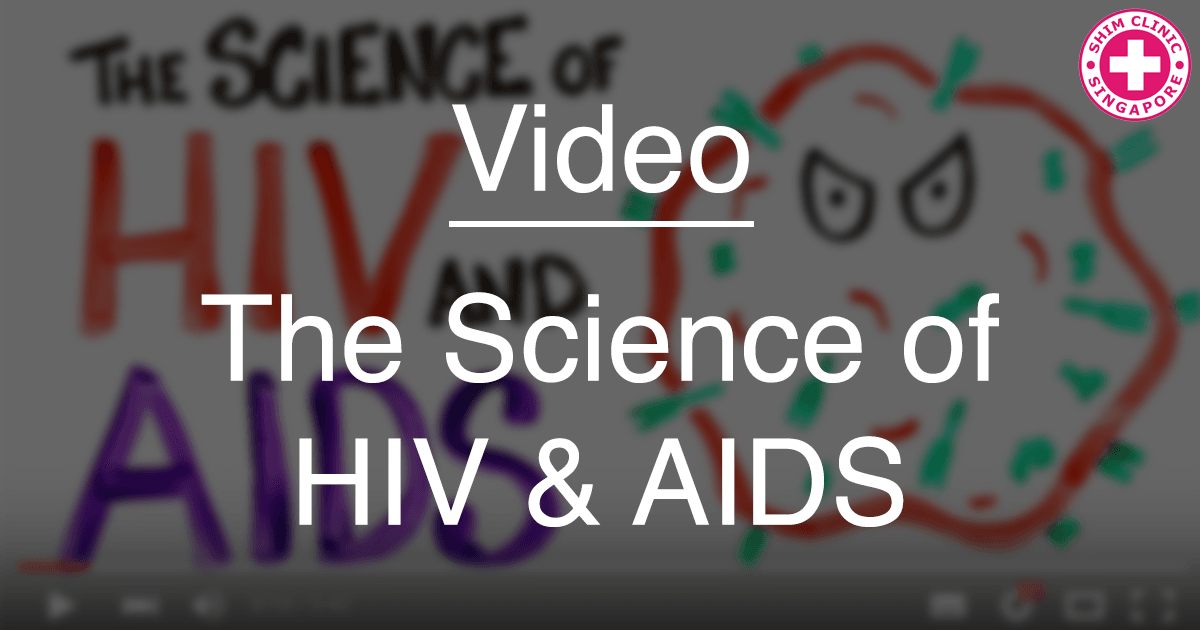This video provides an insightful introduction to the science of HIV/AIDS. It offers a very clear and schematic description of the mechanism of HIV infection. It is one of the most prevalent diseases in the world today. About 35 million people are affected by it worldwide. As the mechanism, symptoms and possible medicines of HIV infection as well as the distinction between HIV and AIDS are not well known, this video outlines these topics in a concise manner.
HIV – What and How?
This video discusses the common transmission techniques of HIV. It busts popular myths about HIV like transmission through touch and explains that it is transmitted only through contact with body fluids like semen, blood, breast milk and vaginal. It further describes the infection mechanism of HIV in great detail. After entering the blood stream of a person, HIV predominantly attacks T-helper cells. T-helper cells or CD4 cells are a type of white blood cells (WBCs), which play an important role in the functioning of the immune system. The glycoproteins on the viral envelope fast mutating proteins. Thus, these proteins disguise the virus and trick the T-cells. It then attaches to specific proteins on the T-cell and the membranes fuse. This gives the HIV access to the T-cell and it releases 2 strands of viral RNA and 3 essential replication enzymes.
As HIV belongs to the retroviridae family, after entering the host cell, the RNA strands generate double stranded DNA by the process of reverse transcription. The DNA of viral origin is then integrated into the host genome. This makes the T-cell believe that the DNA of viral origin belongs to its own genome. Thus, it starts producing more copies of the virus. These viral particles exit the host cell and attack neighboring T-cells.
AIDS
The video is also instrumental in understanding the distinction between HIV and AIDS. Often people confuse these two terms and use them incorrectly. In this video, it is clearly described that AIDS is the advanced stage of HIV infection. If left untreated, HIV starts killing each T-helper cell they infect. This results in an eventual decrease in the overall number of T-cells. When this number becomes less than 200 cells per cubic millimeter of blood, the infected person gets AIDS (Acquired Immune Deficiency Syndrome). AIDS basically suppresses the immune system of the affected person and renders him impotent to fight any incoming infections like pneumonia or tuberculosis. It also makes the person more susceptible to cancers.
“Death by AIDS” is a medically inaccurate term as the affected person usually succumbs to an infection or a disease that the immune system failed to fight off.
MEDICINES – The Different Avenues
Today a number of treatments and/or medicines are available to help people who have contracted HIV. Most of them are not targeted against HIV directly, but enable the immune system to fight infections better. This video describes a few of the current treatments and medicines. A drug called ‘Daraprim’ is one such example. It is an FDA approved antiparasitic medicine used to prevent and treat opportunistic infections, occurring as a consequence of HIV infection. Another group of medicines used to treat HIV infection are anti-retroviral drugs. They slow down the replication of the virus by blocking essential enzymes.
PREVENTION & CURE
The video also briefly discusses PrEP or Pre-exposure Prophylaxis, which is a prevention therapy used to protect people who are not affected but are at high risk of exposure to the virus. The molecular mechanism of PrEP function is the same as anti-retroviral drugs, It specifically blocks reverse transcriptase and thus stops the viral replication process. What they didn’t mention is HIV PEP or HIV Post-exposure Prophylaxis. PEP therapy is used to treat those who have already been exposed to the HIV virus and is only effective within 72 hours of exposure.
The video concludes by discussing a possibility of curing HIV by using the immunity of a sub-population to HIV. It is not very common knowledge, but a small population of people is resistant to HIV infection. They have a genetic immunity against HIV. This has provided a ray of hope for devising a cure for HIV Infection. The HIV-resistant population has a mutation linked to the T-cells, which prevents infection of the T-cells by HIV.
As an example of this therapy, the video mentions a case in which a HIV-infected person received bone marrow from a donor belonging to the HIV-resistant population. So the patient received new stem cells which would generate T-cells with the same mutation as the donor. Within a period of 20 months, the patient had undetectable levels of the virus in his bloodstream. Although this kind of treatment is very specific and its availability is limited, it certainly presents the possibilities of therapies based on the concept of generating HIV-resistant cells.
Along with other available therapeutic models, medicines and prevention techniques, the possibility of inducing intrinsic HIV-resistance can make HIV a thing of the past.
This video is a coherent collection of information about HIV/AIDS, which would be instrumental in understating the science behind it. Although it includes several details about prevention and cure of HIV infection, it overlooked the discussion on PEP (Post Exposure Prophylaxis) for avoiding infection by HIV within 72 hours of exposure, which is a promising technique. Finally it provides an idea of how close the world is to establishing a cure for HIV/AIDS.

